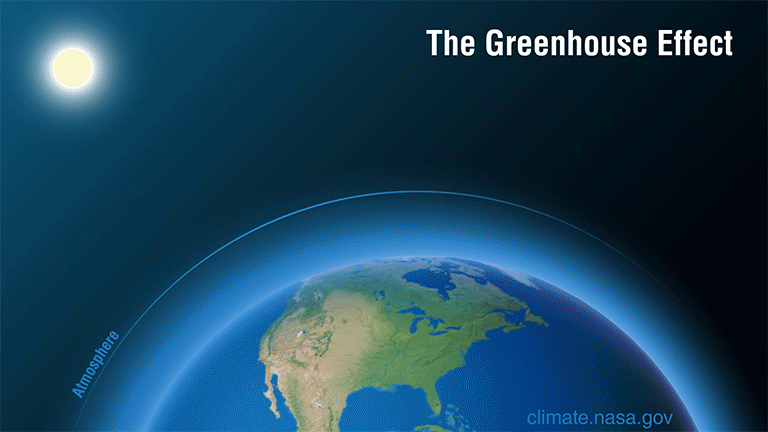Humidity: Earth's Most Abundant Greenhouse Gas
Humidity is responsible for 50% of the Earth's greenhouse effect, making our planet habitable by trapping the Sun's heat.
#2 Your Daily-ish Knowledge Dose
Hi everyone!
I've always found joy in learning or thinking about at least one new thing each day.
It's a small but happy habit that keeps my curiosity alive and my mind engaged. That's why I started a new section to the blog: "Your Daily-ish Knowledge Dose."
In this space, I'll be sharing ideas, and tidbits that spark thought and inspire deeper understanding.
I hope these daily doses of knowledge will enrich your day just as much as they do mine.
And if there's something you're curious about or a topic you'd love to dive into, feel free to share your thoughts—let’s explore together!
Humidity: Earth's Most Abundant Greenhouse Gas
When we talk about climate change, we often focus on carbon dioxide (CO2) and methane as the main culprits.
But there's another key player that's frequently overlooked: humidity.
Surprisingly, it's responsible for about 50% of the Earth's greenhouse effect, making our planet habitable by trapping the Sun's heat.
Greenhouse gases, including water vapor, keep our planet livable. Without them, Earth’s surface temperature would be about 59 degrees Fahrenheit (33 degrees Celsius) colder. However, the role of water vapor in climate change is complex and often misunderstood.
If today’s more of a video-watching day for you, I’ve got a great one you might like :)
Water Vapor: The Silent Amplifier
While it's true that water vapor is the most abundant greenhouse gas, it's not the main driver of global warming.
CO2 is still the leading cause of the warming we're experiencing today. The relationship between water vapor and CO2 is one of amplification, not causation.
As CO2 levels increase, they warm the atmosphere, which in turn allows it to hold more water vapor.
This additional water vapor then amplifies the warming effect, creating a feedback loop that intensifies climate change.
The Water Vapor Feedback Loop
Water vapor doesn't cause global warming directly; instead, it acts as a multiplier. Here's how the loop works:
For Every 1°C Increase in Atmospheric Temperature: The atmosphere can hold approximately 7% more water vapor.
This Additional Moisture: Absorbs more heat, further warming the atmosphere.
The Resulting Cycle: Continues to increase both temperature and humidity, intensifying the overall greenhouse effect.
Without this feedback loop, the impact of CO2 on global temperatures would be significantly less severe. Essentially, water vapor doubles the warming effect of CO2, making it a critical factor in climate dynamics.
What Makes Water Vapor Unique?
Water vapor stands out from other greenhouse gases in three key ways:
Condensability: Unlike non-condensable gases such as CO2 and methane, water vapor can change from gas to liquid at atmospheric temperatures. This is why it plays a direct role in the Earth's water cycle, moving between the atmosphere, land, and oceans.
Temperature-Dependent Concentration: Water vapor levels in the atmosphere are directly tied to temperature. As the planet warms, water vapor levels rise, which in turn amplifies the warming effect—a classic example of a positive feedback loop.
Short Atmospheric Lifetime: Unlike CO2, which can persist in the atmosphere for hundreds of years, a water vapor molecule remains airborne for just about 9 days before it precipitates out as rain or snow. This short lifespan means that water vapor's impact is highly variable and closely linked to local conditions.
Impact on Weather Patterns and the Water Cycle
The increase in atmospheric water vapor has significant implications for global weather patterns:
Extreme Weather Events: More water vapor means more energy for severe weather events, including intense storms and heavy rainfall. This can lead to more frequent and extreme weather events like hurricanes and flash floods.
Regional Precipitation Shifts: Higher atmospheric moisture levels are likely to make wet regions wetter and dry regions drier, exacerbating existing water challenges and contributing to more severe droughts and floods.
Soil Moisture Dynamics: While increased water vapor can lead to heavier rainfall, it also boosts evaporation rates from the land. This can dry out soils, causing rainwater to run off instead of being absorbed, which increases the risk of drought in some regions.
The Dual Role of Clouds
Water vapor's impact on climate is further complicated by its role in cloud formation:
Cooling Effect: Low-lying clouds often reflect sunlight back into space, which cools the Earth's surface.
Warming Effect: High-altitude clouds, like cirrus clouds, can trap heat and contribute to warming.
The presence of water vapor makes climate forecasting challenging, as the type and location of cloud formation can significantly influence global temperatures.
What Can We Do?
While we can't directly control the levels of water vapor in the atmosphere, we can tackle the root cause of its increase—CO2 and methane emissions. By reducing our reliance on fossil fuels and adopting sustainable practices, we can help stabilize the climate and mitigate the cascading effects of increased water vapor.
Food for Thought
Could changes in humidity and its effects on cloud formation impact solar energy production?
How might architects and urban planners need to adapt their designs to account for changing humidity levels in different regions?
Thanks :)
Enjoying my writing? Wanna join me on the road and support my work?
Wanna read more?
Stay tuned for the next blog post coming!
Until then, take care!





Road to Earth 2.0 ? Intelligent information on climate change ... for a change! So refreshing! (apologies for the semi-puns)